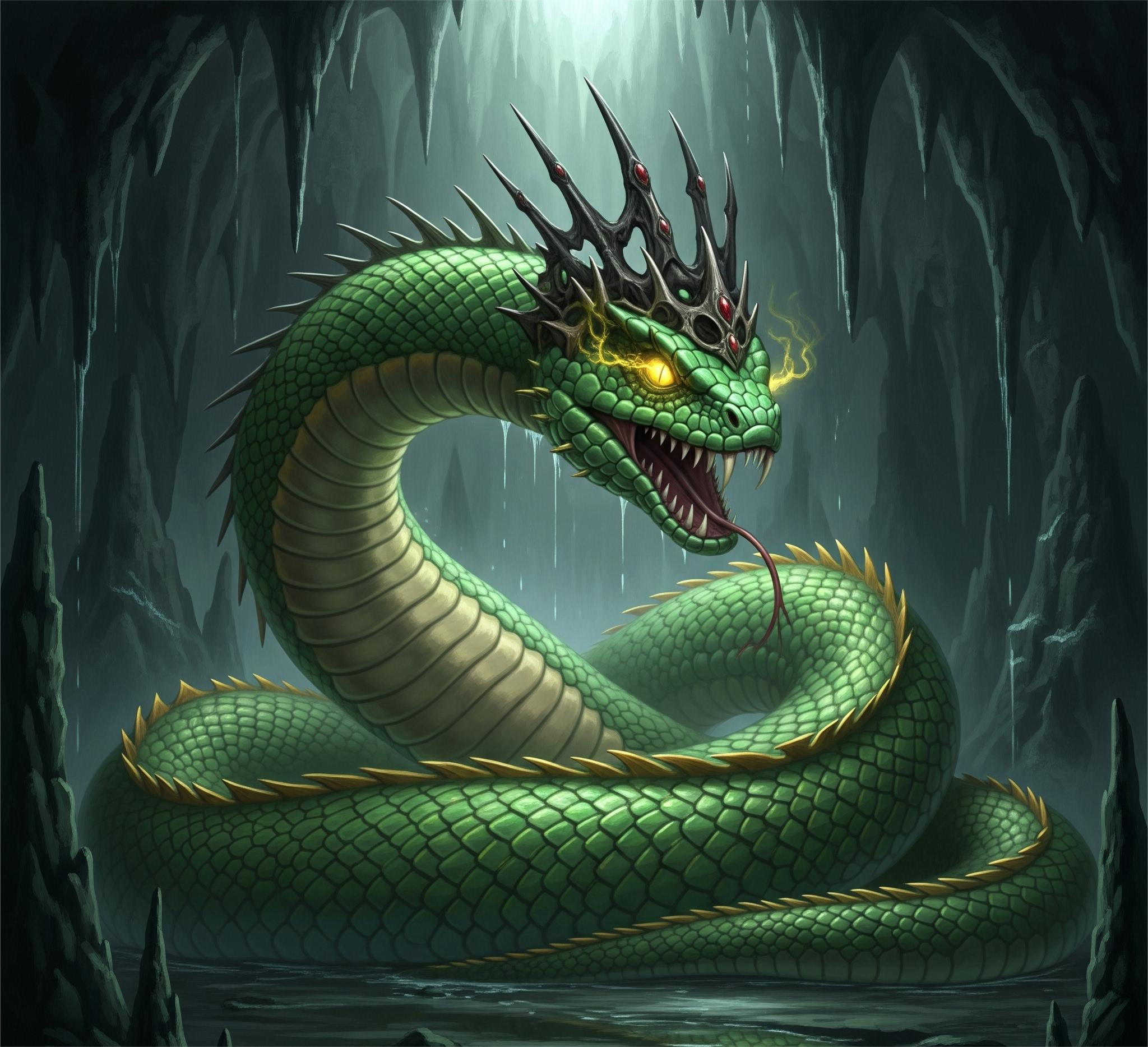In the shadowy pages of medieval bestiaries and the whispered fears of European peasants lurked a creature of unimaginable terror: the basilisk — the so-called “King of Serpents.” Said to kill with a single glance, wither crops with its breath, and leave entire landscapes scorched and lifeless, the basilisk became one of the most feared and fascinating monsters of the Middle Ages.
But what exactly is a basilisk, and where did this myth begin?
Origins: A Monster Born of Error
The earliest mention of the basilisk appears in Pliny the Elder’s Natural History (1st century CE). Pliny described a small serpent from North Africa, no more than 12 inches long, with a crown-shaped mark on its head, hence the name basiliskos, Greek for “little king.”
According to Pliny, it had a deadly gaze and poisonous breath. Horses would die if they stepped where it had slithered. Even spearing one from horseback was dangerous — its poison would travel up the spear and kill the rider.
This already fearsome image was amplified in medieval Europe, blending with Christian symbolism, local folklore, and alchemical imagination.
The Basilisk’s Birth: Hatched in Blasphemy
Medieval texts gave the basilisk a dramatic — and unnatural — origin:
A basilisk was said to be born when a toad or serpent hatched a rooster’s egg, a clear reversal of nature.
Sometimes, it was a seven-year-old rooster that laid the egg during a planetary alignment — an impossibility meant to signal an omen of evil.
This perverse birth only enhanced the basilisk’s reputation as a creature of chaos, inversion, and sin.
Its Powers: Death by Sight, Breath, and Touch
The basilisk’s arsenal of death was terrifying:
Its gaze could kill instantly — people, animals, and even other monsters.
Its breath could rot fruit, crack stones, and poison water.
Its touch could destroy entire villages.
Because of these powers, some said only one animal could defeat it: the weasel, whose strong scent and resistance to poison made it the perfect assassin. In some legends, weasels were sent into basilisk lairs as a last resort.
A Mirror and a Rooster: How to Kill a Basilisk
With such dangerous abilities, how could anyone hope to defeat a basilisk?
Two traditional methods appear in medieval texts:
A mirror – Since the basilisk could be killed by seeing its own reflection, brave slayers carried mirrors into its territory, tricking it into self-annihilation.
The crow of a rooster – As ironic as its birth, the creature’s natural enemy was said to be a rooster’s crow, which could kill it or drive it away.
These stories often carried a moral lesson: that pride and evil ultimately lead to self-destruction.
The Basilisk in Medieval Symbolism
The basilisk wasn’t just a monster — it was a symbol:
Sin and heresy – In Christian texts, it was often used to represent Satan or deadly temptation.
Pride and hubris – As the “king” of serpents, its downfall by its own reflection or a humble weasel reminded believers of the dangers of arrogance.
Corruption – Its very breath could rot and pollute, much like moral decay in society.
Basilisks were featured in medieval bestiaries, cathedral carvings, sermons, and alchemical manuscripts, always as a warning.
The Basilisk Today: From Folklore to Fantasy
Though belief in real basilisks faded with the Enlightenment, the creature found new life in literature, video games, and modern fantasy:
Harry Potter famously featured a giant basilisk in The Chamber of Secrets, combining medieval fear with modern flair.
Dungeons & Dragons introduced the basilisk as a stony-gaze beast with a reptilian twist.
The Witcher series reimagined it as a wyvern-like monster, blending folklore with brutal realism.







